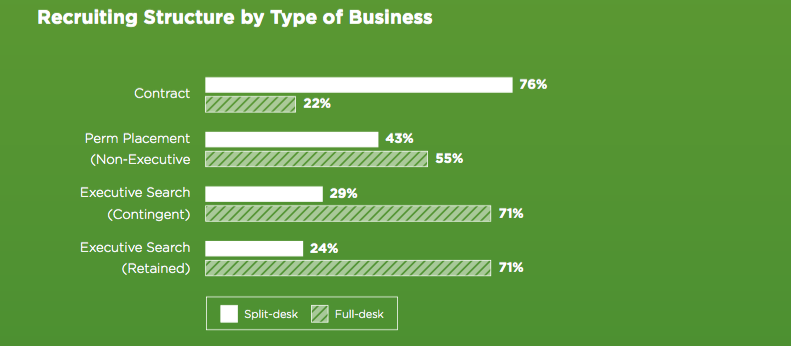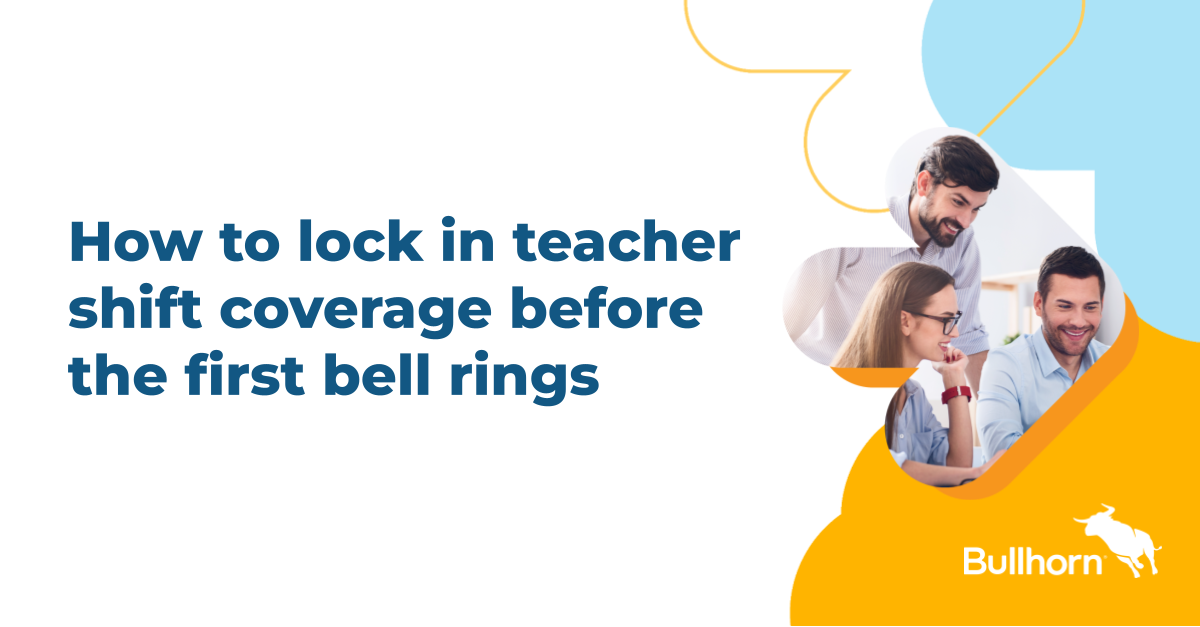How Split-Desk Staffing Firms Create Alignment Between Salespeople and Recruiters

Split-desk or full-desk? It’s a question all staffing firms have to consider—and then reconsider as they grow. More and more staffing firms are choosing to go split-desk: More than 60 percent of staffing firms run a split-desk model, according to the 2017 North American Staffing & Recruiting Trends Report.

While operating as a split-desk has its benefits, it also creates alignment issues for firms. How do you ensure that everyone on the team is on the same page? Here are some of the most common responses:
We’re Working On It
Many split-desk firms admitted to having no formal strategy in place. Unsurprisingly, those without alignment strategies in place often reported a lack of unity between salespeople and recruiters. If you don’t have a plan in place, you may want to consider some of the options below for creating an alignment strategy.
Regular Meetings
Regular meetings were by far the most popular method for creating alignment at split-desk firms. While the frequencies of these meetings varied dramatically—from twice-daily status meetings to quarterly check-ins—staffing professionals across the board say meetings are essential for ensuring everyone is on the same page. As one staffing professional put it, “(Creating alignment) is a constant struggle. You have to have trust.”
We Build It Into Our Training Program
Many firms use their training programs to encourage cooperation and collaboration from the very beginning. Some firms bring in a seasoned leader to discuss alignment in an onboarding session, others develop specific goals and assignments designed to encourage team unity. Other firms train recruiters and salespeople together before roles have even been assigned. One staffing leader describes how his firm employs this method: “We train together and decide which role we want to move into after 3-6 months as a recruiter. You then become either an Account Manager (sales) or Delivery Manager (recruiting).”
Through An ATS
Numerous respondents reported that ATS use was critical for creating alignment between teams and roles. For many split-desk firms, an ATS is essential for streamlining workflow and providing structure. Staffing firms use an ATS to ensure that all the critical information about a client or a candidate is accessible to everyone on an account. As one respondent says, “It’s critical to emphasize communication through ATS updates and email alerts.”
Compensation Structure
A strategically designed compensation structure are one of the most popular strategies for firms seeking to create alignment between recruitment and sales. The exact details of the compensation structure varied from firm to firm. Build a compensation structure that makes sense for your team. Many firms employ equal commission for both roles. If your firm incorporates a role hierarchy (i.e., recruiters report to sales), you may want to adjust your compensation plans accordingly.
Want more insight on the trends, priorities, and challenges staffing pros say they face in the year ahead? Read the full report and learn more about the opportunity that lies ahead for firms in 2017.









